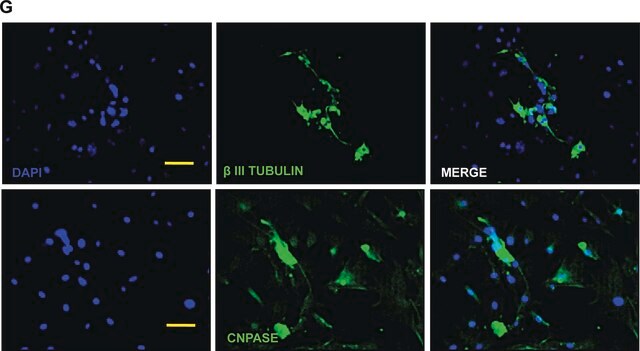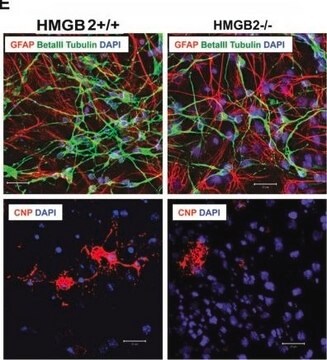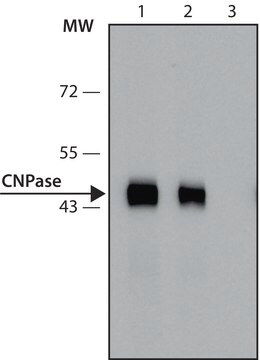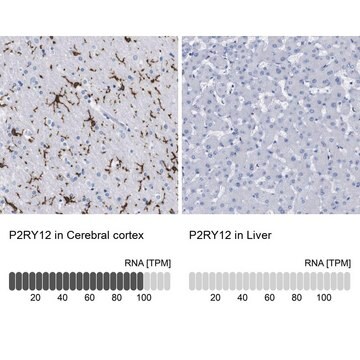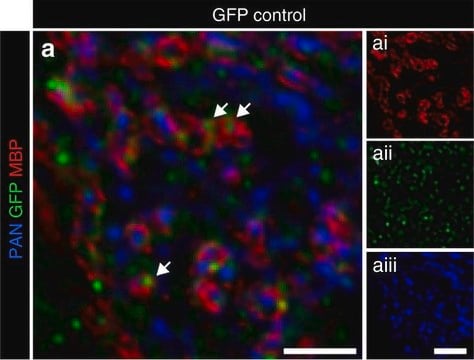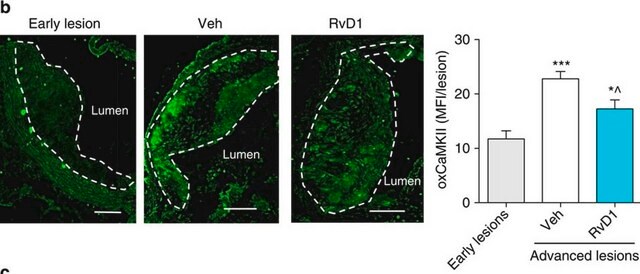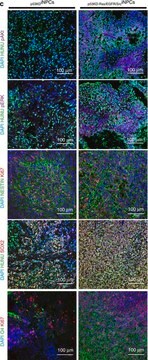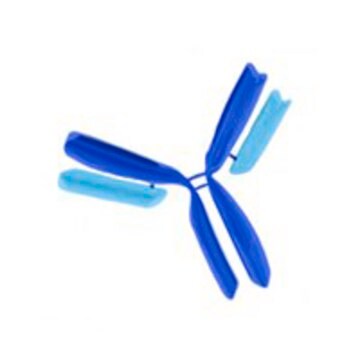MAB326R
Anti-CNPase Antibody, clone 11-5B
clone 11-5B, Chemicon®, from mouse
About This Item
Polecane produkty
pochodzenie biologiczne
mouse
Poziom jakości
forma przeciwciała
purified antibody
rodzaj przeciwciała
primary antibodies
klon
11-5B, monoclonal
reaktywność gatunkowa
rat, human, bovine, canine, sheep, pig, rabbit, mouse
producent / nazwa handlowa
Chemicon®
metody
immunocytochemistry: suitable
immunohistochemistry (formalin-fixed, paraffin-embedded sections): suitable
western blot: suitable
izotyp
IgG1
numer dostępu NCBI
numer dostępu UniProt
Warunki transportu
wet ice
docelowa modyfikacja potranslacyjna
unmodified
informacje o genach
human ... CNP(1267)
Opis ogólny
Specyficzność
Immunogen
Zastosowanie
A previous lot of this antibody was used in IH (10 μg/mL antibody, prepared fresh daily).
Immunocytochemistry:
A previous lot of this antibody was used in IC (10 μg/mL antibody, prepared fresh daily).
Optimal working dilutions must be determined by end user.
Jakość
Western Blotting Analysis:
1:500 dilution of this antibody detected CNPASE 1/2 on 10 µg of Mouse brain lysates.
Opis wartości docelowych
Postać fizyczna
Komentarz do analizy
Oligodendrocyte culture, Brain lysate
Inne uwagi
Informacje prawne
Nie możesz znaleźć właściwego produktu?
Wypróbuj nasz Narzędzie selektora produktów.
polecane
Kod klasy składowania
10 - Combustible liquids
Klasa zagrożenia wodnego (WGK)
WGK 2
Temperatura zapłonu (°F)
Not applicable
Temperatura zapłonu (°C)
Not applicable
Certyfikaty analizy (CoA)
Poszukaj Certyfikaty analizy (CoA), wpisując numer partii/serii produktów. Numery serii i partii można znaleźć na etykiecie produktu po słowach „seria” lub „partia”.
Masz już ten produkt?
Dokumenty związane z niedawno zakupionymi produktami zostały zamieszczone w Bibliotece dokumentów.
Nasz zespół naukowców ma doświadczenie we wszystkich obszarach badań, w tym w naukach przyrodniczych, materiałoznawstwie, syntezie chemicznej, chromatografii, analityce i wielu innych dziedzinach.
Skontaktuj się z zespołem ds. pomocy technicznej